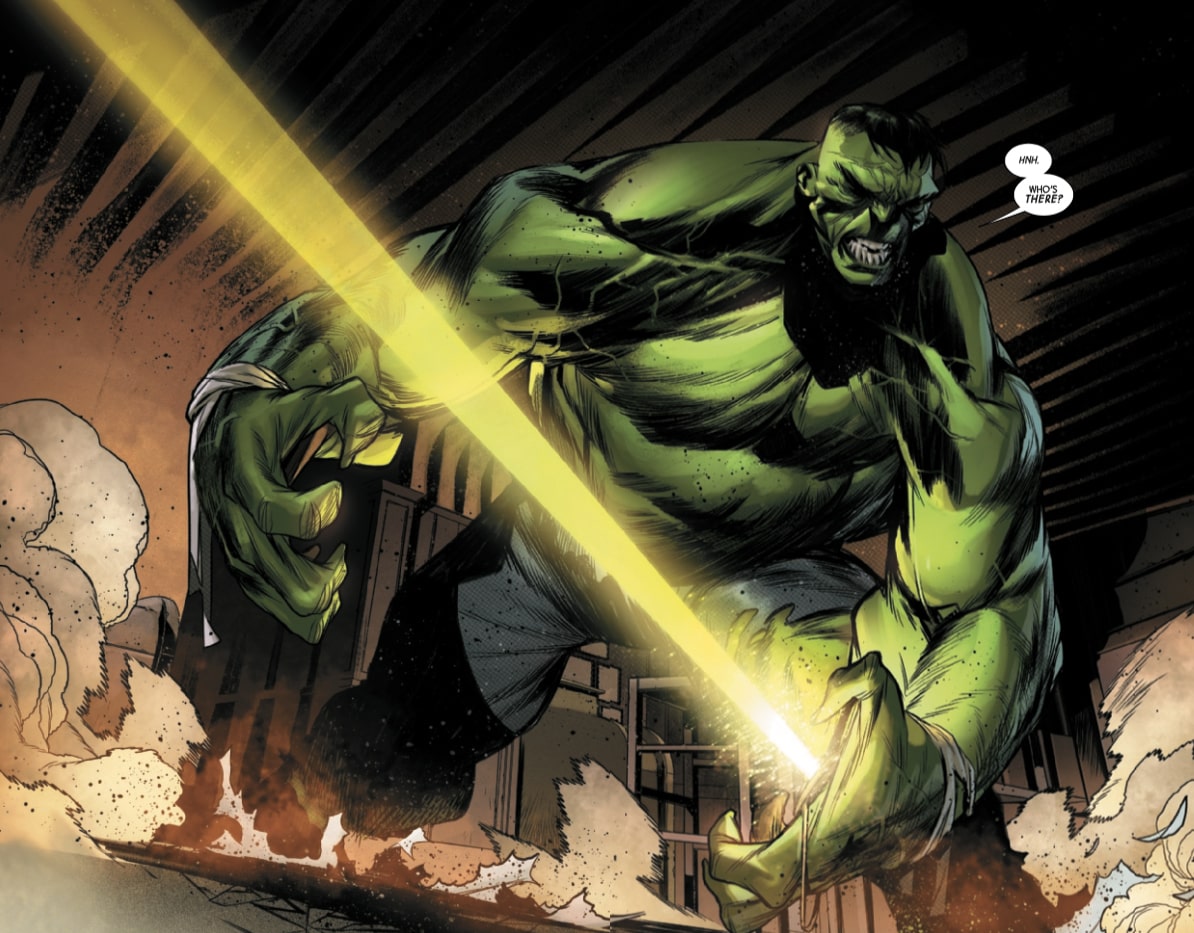 |
| Art by Ron Garney and Richard Isanove |
Before Daredevil, Jessica Jones, Luke Cage and Iron Fist united on the small screen, "Defenders" was the name given to an entirely different bunch of heroes. Formed by writer Roy Thomas in 1971, the original Defenders were a "non-team" comprised of the Hulk, Doctor Strange, Silver Surfer and Namor, the Sub-Mariner. These heroes, often known to prefer working alone, were brought together by coincidence on numerous occasions to foil supernatural plots - and now they've been reassembled to save the world once more in The Best Defense.
Rather than a standard inter-series crossover or miniseries, The Best Defense is an anthology of one-shots with an overarching plot akin to DC Comics' Multiversity. What begins as a murder mystery story gradually evolves into a more complex tale as the connections between each chapter begin to surface, culminating in a team-up of cosmic proportions.
 |
| Simone di Meo's imposing Hulk |
The first of the book's five chapters is a Hulk story by Al Ewing and Simone di Meo which successfully continues the supernatural yet gritty tone set by the ongoing Immortal Hulk series while remaining separate and accessible to new readers. Classic Jack Kirby panels from the original Hulk comics are creatively spliced with the contemporary art to provide more of the haunting commentary that has made Bruce Banner's recent outings so good.
Chip Zdarsky and Carlos Magno's Namor one-shot comes next and feels completely different to the previous chapter with its ambient and detailed depiction of the world beneath the waves. This character study serves as an excellent introduction to who is easily the least recognisable hero in the book, analysing the complexities of the undersea king without sacrificing the cheesier parts of his personality.
 |
| Namor is trying to unite the people of Atlantis |
The third chapter (and halfway point) is a beautiful tribute to Doctor Strange creator Steve Ditko by Gerry Duggan and Greg Smallwood that jumps forward in time to tell us Stephen Strange's final stand against Dormammu. This feels like a convergence point between the book's other stories, marrying the grit of the first with the splendour of the second to drive forward the overall narrative.
Silver Surfer's adventure, the last one before the big team-up, features both story and art by Jason Latour. Immersive Star Wars-style visuals are the backdrop to a melancholy, thought-provoking narrative on the value of life, and features a particularly stunning splash page that really belongs in an art gallery.
 |
| The Conductor, destroyer of worlds |
Al Ewing returns with his main Immortal Hulk collaborator Joe Bennett for the final chapter, which skilfully melts together the feel of each previous hero's journey. This finale follows the all-too-familiar "save the world" format and makes the book feel like a mini MCU Phase One, but demonstrates how the Defenders are different to other superhero teams.
Overall, Defenders: The Best Defense is a fresh and intricate take on four incredibly interesting characters that pays the utmost respect to the artists that created them. Each of its short interconnected parts are equally appealing and accessible to fans old and new, and is essential reading for anybody with their eyes on recent Marvel releases.
Rating: 8.5/10
Defenders: The Best Defense is collected in a single paperback volume, available now in all good bookstores or ready to download digitally on the Comixology app. You can find more of Al Ewing's excellent Immortal Hulk adventures in the ongoing series' first two collected volumes, with the third coming this Spring.

Comments
Post a Comment